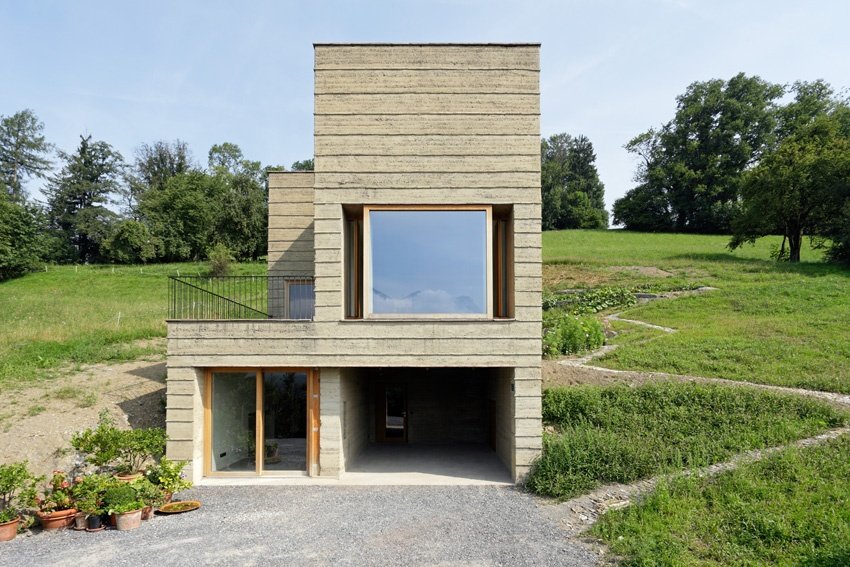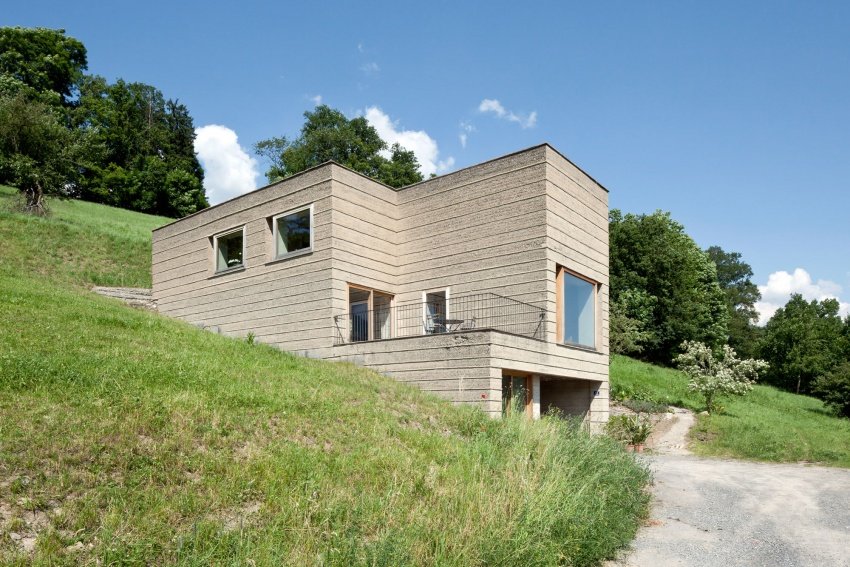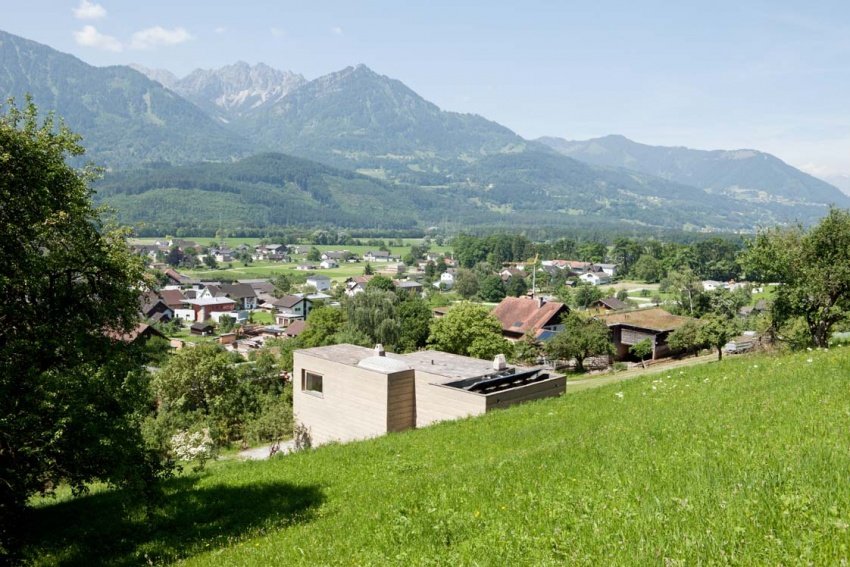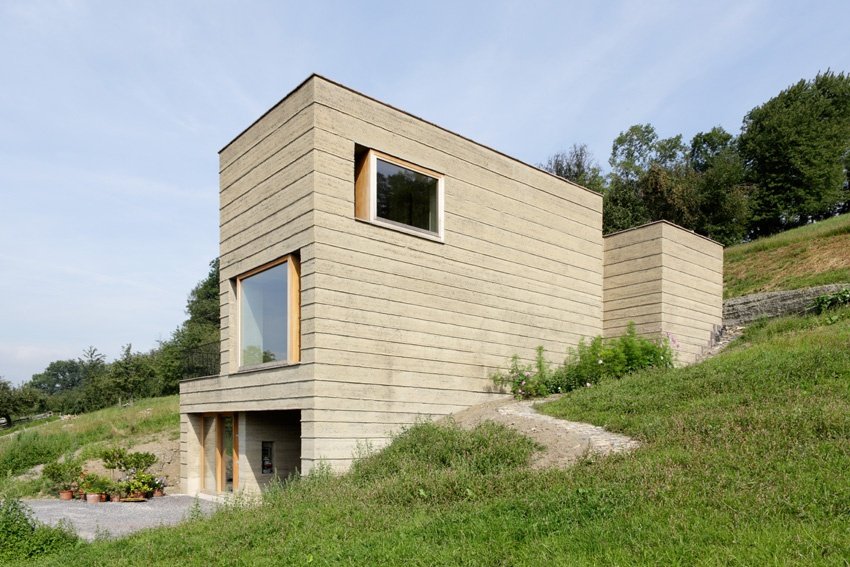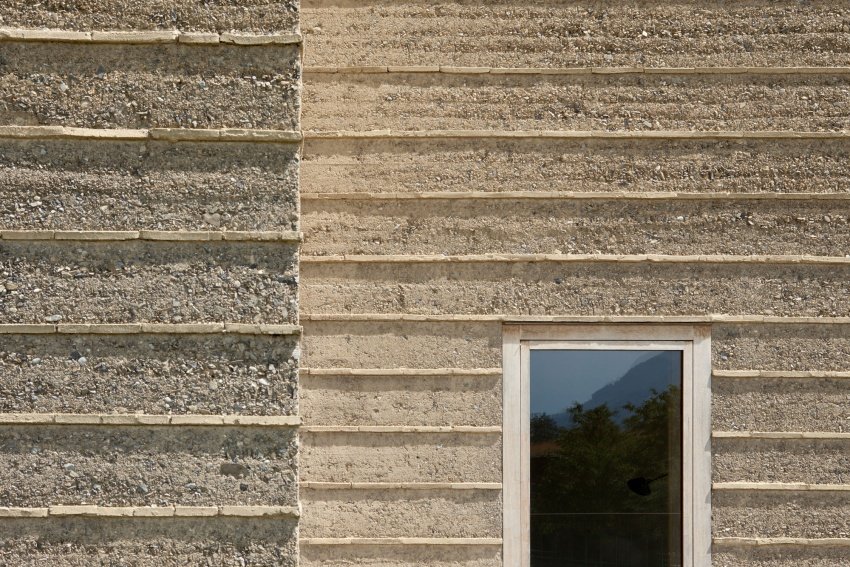Clay as a building material
Clay has been used as a construction material for thousands of years, and for a good reason. This natural and sustainable material has many benefits, including environmental, technical, and health advantages.
As you can see in our projects, the Happy Pigeons Lab is a huge fan of clay as a building material. Check out our “natural nest” and basement project to understand how to work with clay.
Clay plaster in our “natural nest”
Advantages and limitations of clay construction
Let's dive into the advantages and limitations of clay construction.
Benefits for the Environment
One of the primary advantages of clay construction is its low environmental impact. Clay is a natural and renewable resource that can be harvested and replenished without harming the environment. Additionally, clay buildings are highly energy-efficient, as they have excellent thermal mass properties that help regulate temperature and humidity levels. This means that clay buildings require less energy for heating and cooling, resulting in lower energy bills and reduced carbon emissions. Further, it requires very little energy to produce compared to other building materials like concrete or steel.
As you can see in our basement project, it can also be circular since we got our raw clay material from another nearby construction, where it was no longer needed.
Sourcing Clay from nearby construction for our basement project (“The “Clayground”)
Technical Properties
Recyclable: Clay is a recyclable material, meaning it can be used and reused indefinitely. When clay buildings end their lifespan, they can be recycled and used again in new construction projects, making them highly sustainable.
Easy to repair: Some cracks evolved over time in our clay floor in the coworking basement. That it is not unusual and even happens regularly on concrete floors. Unlike a concrete floor, our clay floor was straightforward to repair. We just had to add water to the part with the crack, even it out, and let it dry. Done, it looked like a new floor!
Easy to use: Clay is a versatile and easy-to-use material that can be molded and shaped to suit any design. It can create a wide range of architectural styles and is a popular choice for traditional and contemporary buildings.
Resistant and load-bearing: Clay buildings are highly resistant. Many examples of clay buildings worldwide are hundreds of years old and still lived in, such as a 5-floor building in the city of Lyon. It is historically shown that clay is a highly durable and long-lasting choice for construction.
Clay is also a load-bearing material, which means it can support heavy weights without buckling or cracking.
Healthy Properties:
Healthy room climate: Clay has natural moisture-regulating properties, which can help maintain a healthy and comfortable room climate. It can absorb excess moisture from the air during humid weather and release it back into the room when the air is dry. This helps prevent mold growth and maintains a healthy indoor environment.
Limitations of Clay Buildings
Despite its many advantages, clay construction also has some limitations that should be taken into consideration.
Cost: Clay construction can be more expensive than other building materials, such as concrete or wood. This is because the production process is more time-consuming and labor-intensive.
Weathering: Clay buildings can be susceptible to weathering, especially in areas with high levels of rainfall or extreme temperatures. This can lead to cracking and deterioration over time, which may require regular maintenance. However, clay can also be used in these climates. It only needs some constructional protection with other materials.
Methods of using clay in construction
One of the most common methods of using clay in construction is adobe construction. Adobe is a type of clay soil mixed with straw or other organic materials to create a sturdy building material. Adobe structures are typically built using wooden frames or molds, with the adobe mixture being packed into the frame and left to dry in the sun. Adobe buildings are often found in areas with warm, dry climates, as the material is susceptible to damage from moisture.
Another popular method of using clay in construction is rammed earth construction. Rammed earth is a mixture of clay, sand, and gravel packed tightly into forms or molds to create a solid, durable structure. Rammed earth buildings are often sloping or curved, as the material is difficult to shape into straight lines. Rammed earth structures are also susceptible to moisture damage, typically built in dry climates or with protective coatings.
Cob construction is another method of using clay in building, which involves mixing clay soil with sand, straw, and water to create a thick, pliable mixture. The cob mixture is then formed by hand into large, rounded shapes, stacked and smoothed to create walls, arches, and other architectural features. Cob structures are often built with a curved or organic shape, making them particularly well-suited for unconventional or artistic designs.
Finally, clay can also be used as a plaster or stucco material to cover the exterior or interior of a building. Clay plaster is typically made from a mixture of clay soil, sand, and straw and is applied to a wall or other surface with a trowel or other tool. Clay plaster is a popular option for creating a rustic or natural look in a home or building, as it has a unique texture and can be tinted with natural pigments to create a range of colors.
Contemporary clay buildings - An overview
Haus “Rauch”
Martin Rauch is an Austrian architect and pioneer in the field of rammed earth construction. He is known for his innovative and sustainable approach to architecture, using natural materials and traditional building techniques to create modern, energy-efficient buildings.
One of his most famous works is his own residence, "Haus Rauch," located in the Austrian village of Schlins. The house, which Rauch designed and built himself, is a stunning example of his approach to architecture. It features walls made of rammed earth.
The building also incorporates other sustainable features, such as solar panels and a rainwater collection system. The house is designed to be highly energy-efficient, with minimal environmental impact.
But perhaps most impressively, Haus Rauch is not just a beautiful and sustainable home – it is also a functional workshop and laboratory for Rauch's ongoing experiments with rammed earth construction. Rauch uses his home as a testing ground for new techniques and materials, constantly refining and improving his approach to sustainable building.
Today, Rauch continues to live in Haus Rauch, and it has become a destination for architects and designers from around the world who come to study his innovative techniques. His work has won numerous awards and has been featured in publications and exhibitions worldwide.
Through his work, Martin Rauch has shown that sustainability and innovation can go hand in hand. By using traditional techniques and natural materials, he has created modern, beautiful, and energy-efficient buildings that are both functional and environmentally responsible.
(fotos: Beat Bühler, Martin Rauch)
Kapelle der Versöhnung
The Kapelle der Versöhnung, or Chapel of Reconciliation, is a unique place of worship and remembrance located in the heart of Berlin. The chapel is situated on the site of the former Berlin Wall, which divided the city into East and West during the Cold War.
Outside-view of the Chapel
The chapel was built in 2000 as a symbol of reconciliation between the people of East and West Germany and as a memorial to the victims of the Wall. The chapel's design is simple and understated, with a wooden roof that echoes the shape of the former church that stood on the site before the East German government destroyed it in 1985.
One of the most striking features of the chapel is its use of materials. The walls are made of rammed earth that provide a sense of warmth and texture, and they also serve as a metaphor for the process of healing and reconciliation.
Inside-view of the chapel with rammed earth wall (on the right side)
Conclusion
In summary, clay construction is a highly sustainable and environmentally friendly building material with many technical and health benefits. It is easy to use, load-bearing, and recyclable and can help create a healthy and comfortable indoor environment. However, it also has some limitations, such as higher cost and susceptibility to weathering. Despite these limitations, clay construction remains a popular and viable choice for building construction, particularly for those who prioritize sustainability and environmental responsibility.






